New Horizons: Pluto probe 'on course' for flyby
- Published
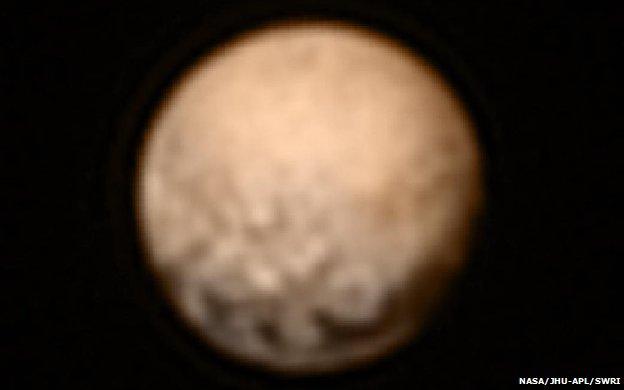
The spots are part of a dark band that wraps around much of Pluto's equatorial region
New Horizons lost very little science data when it went into "safe mode" at the weekend, the mission team says.
Nasa's Pluto probe experienced a fault on Saturday that put it temporarily out of contact with the Earth, as it speeds towards a flyby next week.
Principal investigator Alan Stern said that about 30 observations of the dwarf planet were missed as a consequence of the hiccup.
This represents "far less than 1%" of the top science about to come back.
"While we would prefer that this event had not happened, I can tell you as PI that this is a speed bump in terms of the total return that we expect from this flyby," Prof Stern told reporters in a Monday teleconference.
Computer support
Launched from Earth in 2006, New Horizons is currently bearing down on Pluto and its moons at nearly 14km/s.
The probe is due to make its close approach to the dwarf on 14 July, gathering a welter of photographs and other data as it zooms past
And it was while engineers were sending up the command sequence for this observation campaign that the anomaly occurred.
The main computer tripped up, said the mission team, because it was trying to write the new information to its flash memory while at the same time attempting to compress a rich set of existing data.
The computer could not handle both tasks and New Horizons, as it is designed to, put itself in a protective mode.
This saw operations transition to the back-up computer, and a brief – just over one hour – dropout in communications with mission controllers here on Earth.
Glen Fountain, New Horizons' project manager, said the problems were very quickly diagnosed and corrected. And he was confident that the same issues could not be repeated during the flyby of Pluto.
"These events that came together, both the compression of a lot of data and a burn to flash - those two events will not happen concurrently again. We do not do another burn to flash during the encounter," he explained.
'Red planet'
It is in the nature of a safe mode that all unnecessary spacecraft activity is suspended, and that includes observations being made by scientific instruments.
The anomaly resulted in the loss of 6% of all observations that had been scheduled for between 4 July and 16 July.
This included 16 images from the long-range, narrow-angle camera Lorri, and four pictures from the Ralph colour camera.
But Prof Stern said the data acquired right at closest approach was the most important, and so the lost observations at the weekend amounted to far less than 1% "by weight" of the key science return.
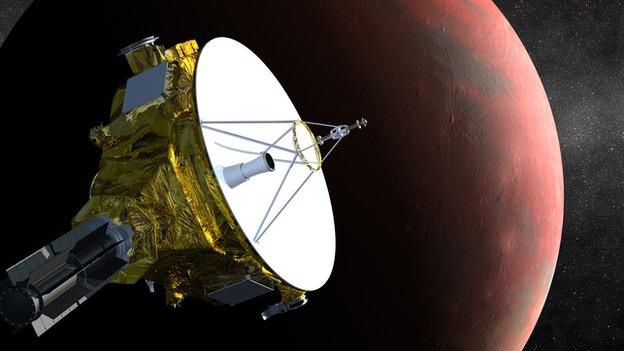
When it gets to Pluto, the New Horizons probe will have a packed schedule of observations
On Monday, New Horizons was just under nine million km from Pluto, but 4.7 billion km from Earth.
The vast distance to the probe's home world means a radio signal takes about 4 hours and 25 minutes from sending to receipt.
Over the coming days, the spacecraft will send back pictures that show Pluto and its main moon, Charon, getting bigger and bigger.
Already, the far-off views are generating considerable excitement.
Pluto is seen to be reddish in colour and to have a series of mysterious spots. By comparison, Charon is grey. A lot of interest so far has centred on its dark polar cap.
The BBC will be screening a special Sky At Night programme about Pluto on Monday 20 July, which will recap all the big moments from the New Horizons flyby.
Jonathan.Amos-INTERNET@bbc.co.uk, external and follow me on Twitter: @BBCAmos, external
- Published2 July 2015
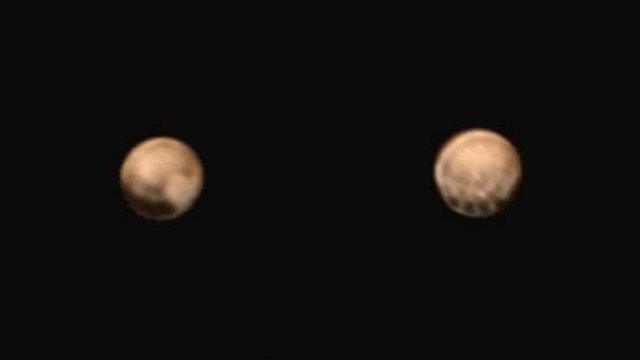
- Published1 July 2015
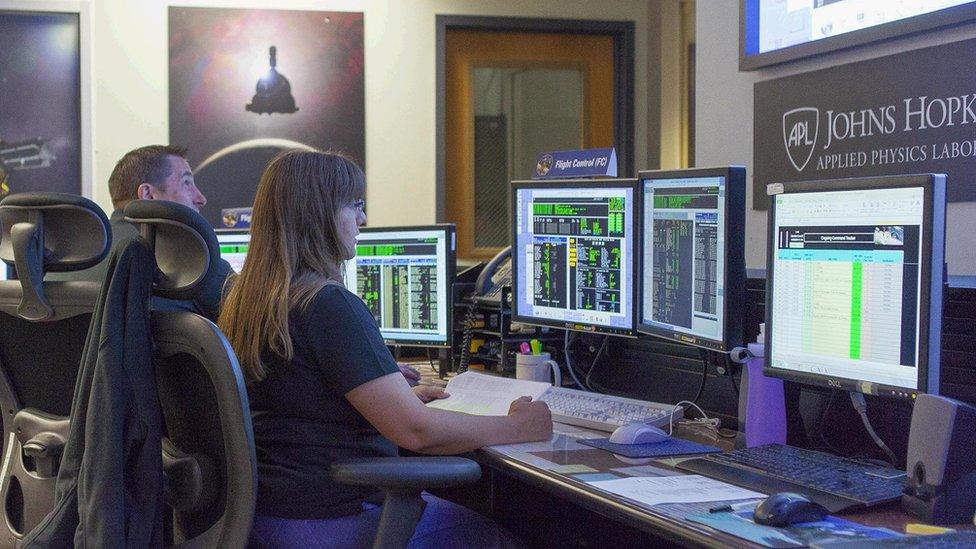
- Published12 June 2015
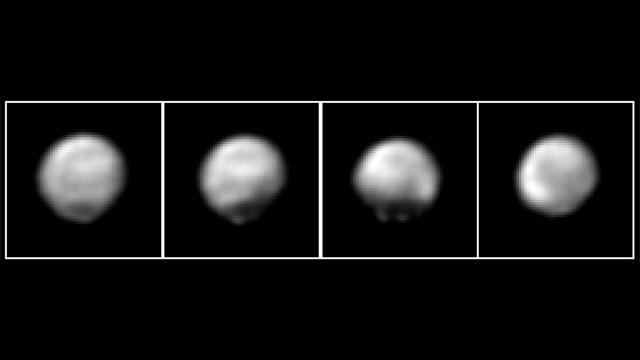
- Published4 June 2015
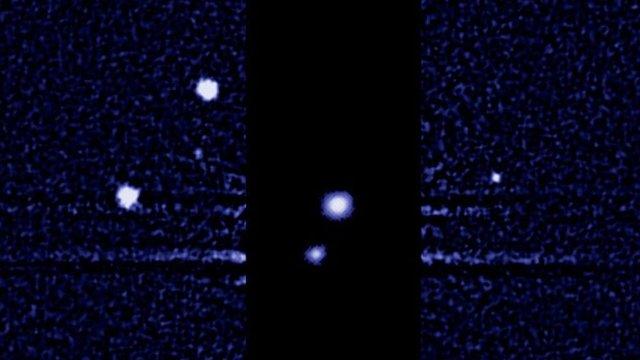
- Published13 May 2015
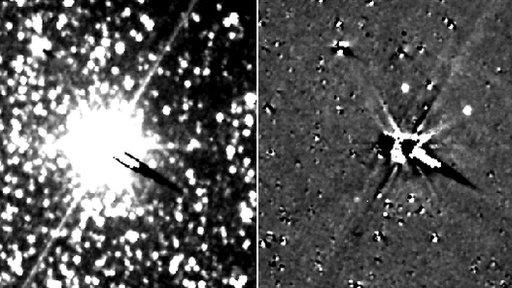
- Published30 April 2015

- Published15 April 2015
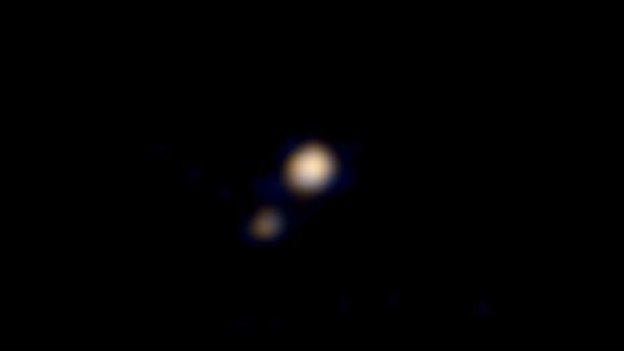
- Published5 February 2015
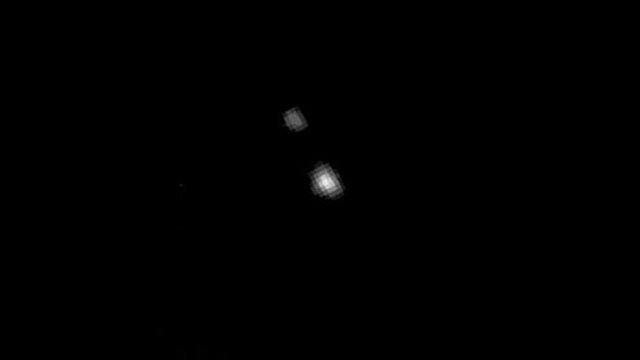
- Published25 January 2015
